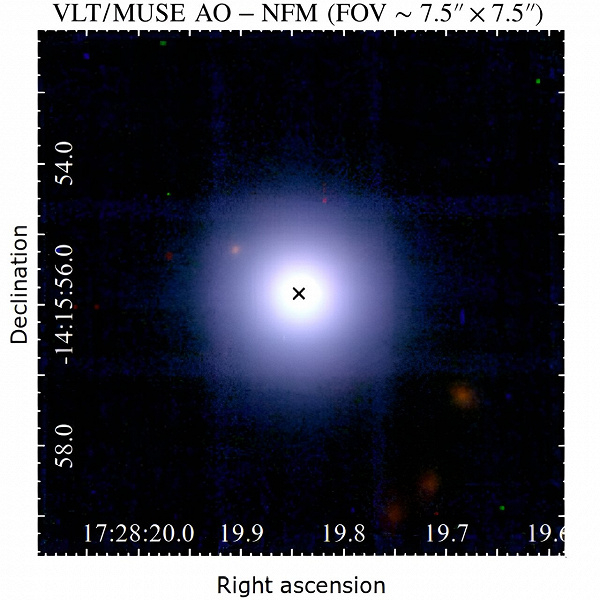New data provides an opportunity to understand the nature of quasars
A group of astronomers using the Multi Unit Spectroscope Explorer (MUSE) — instrument of the «Very Large Telescope» (VLT) in Chile, was able to study the glowing quasar PDS 456. The observations provided new information about the ionized radiation of this quasar.
Quasars — These are active galactic nuclei that emit electromagnetic radiation in various wavelengths, including radio, infrared, visible, ultraviolet and x-ray. These objects are among the brightest and most distant in the known Universe and are of interest to astrophysics and cosmology. For example, quasars have helped study the structure of the Universe and the era of reionization, as well as the dynamics of supermassive black holes and the intergalactic medium.
PDS 456 is the closest and brightest radio-quiet quasar. It has a luminosity of 10^45 ergs per second. Luminosity is a measure of how much energy an object emits per unit time. For clarity, the luminosity of the Sun is about 3.8 * 10^33 erg/s. This means that the luminosity of PDS 456 is 10^12 greater than the luminosity of the Sun.
Previous observations have shown that PDS 456 emits a relativistic and powerful ultrafast X-ray wind, as well as a massive stream of carbon monoxide molecules extending up to 16,000 light-years from the core.
Thanks to MUSE, a group of astronomers led by Andrea Travascio from the University of Milan-Bicocca (Italy) was able to study in detail the ionized radiation of the quasar.
The first thing that was discovered — PDS 456 resides in a complex environment with diffuse radiation from ionized gas extending over a distance of about 150,000 light years. This environment includes a reservoir of gas with a mass of about 10–100 million solar masses.
MUSE observations also showed the outflow of doubly ionized oxygen at a speed of 600 km/s. The size of the outflow is estimated to be about 65,000 light-years, and the mass outflow rate is about 2.3 solar masses per year, which is the lower limit for quasars of similar luminosity.
The study also revealed that the outflow of alpha hydrogen has the same scale structure, morphology and kinematics as the outflow of carbon monoxide molecules. This supports the theory that both components belong to the same multiphase outflow caused by the active galactic nucleus.
The results provide insight into the complex interactions between the different outflow phases caused by galactic core activity and the richness of the PDS 456 environment. This may have implications for planning future multi-band quasar studies.

